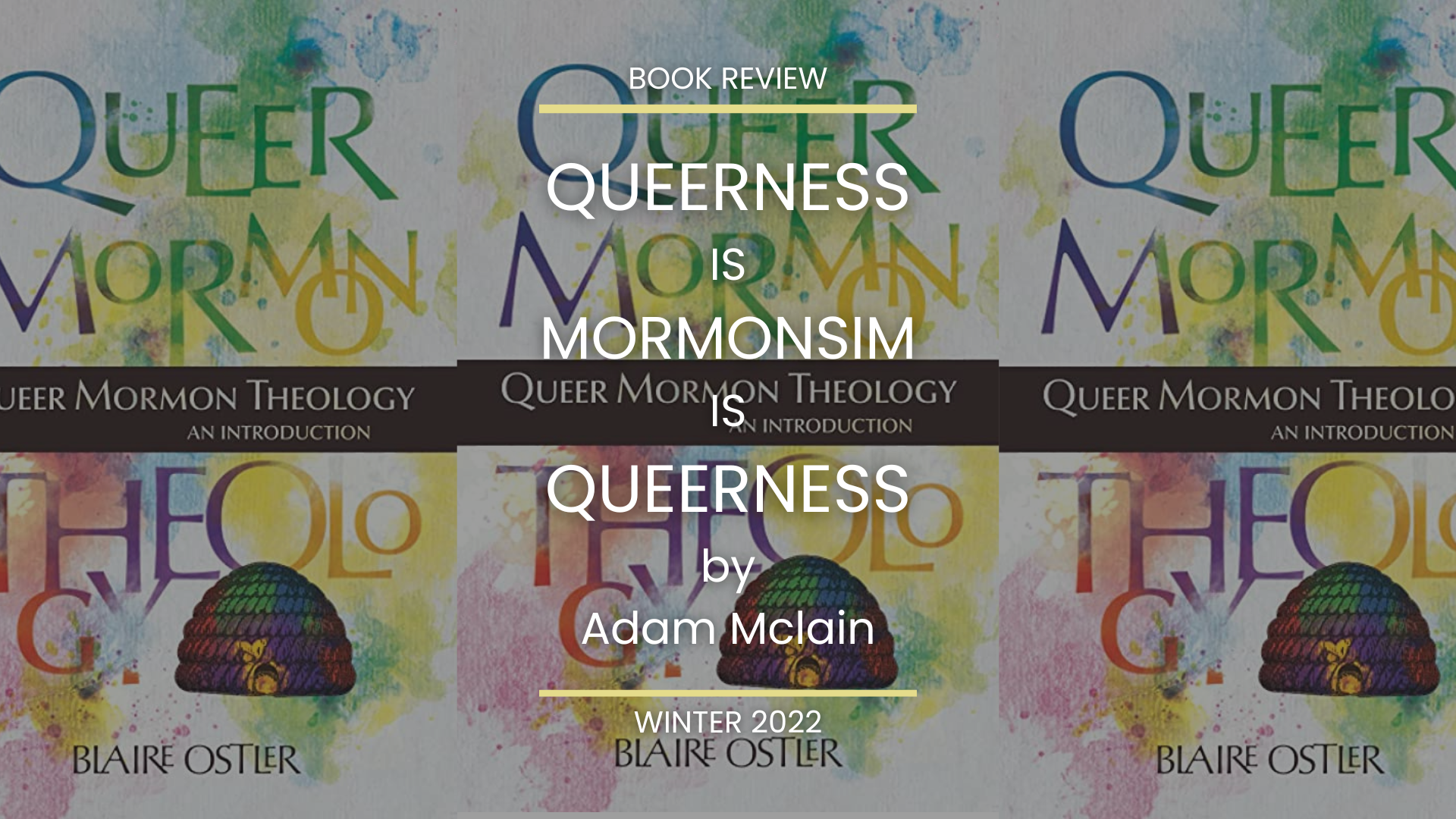Articles/Essays – Volume 55, No. 4
Queerness Is Mormonism Is Queerness Blaire Ostler, Queer Mormon Theology
Queerness—the lived identity of LGBTQ+ and non-normative people—and Mormonism—the theological and social structures adhered to by the Church of Jesus Christ of Latter-day Saints—always seem to be at odds. Blaire Ostler’s Queer Mormon Theology: An Introduction rejects this conflict with an approach that collapses the two into each other: queerness is Mormonism and Mormonism is queerness. This unapologetic stance toward queerness and Mormonism is different than many other approaches to the subject and makes her text’s contribution innovative, advancing, and integral to the contemporary conversation of queerness within Mormonism.
Queer Mormon Theology is separated into seven chapters that discuss central themes: theology, God, Christ, the family, sexuality and creation, polygamy, and policy. Ostler uses this approach to center each topic on a queer reading of the subject rather than an investment in the theology and scholarship as it has been previously constituted. For example, in the second chapter, on Christ, Ostler reads Jesus as queer or, at least, having become queer through the Atonement by experiencing multiple embodied experiences (from childbirth to male-pattern baldness). While Ostler’s arguments succinctly read queerness into the Atonement, she doesn’t establish the various atonement theologies that have proliferated and still proliferate Mormonism. This tactic means she can approach her subject with fresh eyes, unencumbered by years of scholarship.
In addition, this unencumbered approach means that she can reach her audience with her message of queer Mormonism without fear of getting bogged down by having to undo harmful rhetoric or scholarship, engage with anti-queer scholars, or argue against apologists. In other words, Ostler seems to escape presenting the heteronormative theology. Indeed, this approach helps her reach her audience—practitioners of Mormonism. She can clearly articulate her queer Mormon theology and have it stand on its own with Mormon scripture and devotional literature as her foundation.
For this reader, the subtitle to the text is a critical way to view and use the book—Ostler’s text is introductory and invitational. She does not wish to be the final word on the topic; instead, her engagement opens the door for further, more prolonged, and deeper investigations of the subject through her unapologetic, collective hermeneutic. For example, future writers on queerness and Mormonism might use Ostler’s work as a medium by which to engage queer theologians like Justin Lee, Virginia Ramey Mollenkott, Marcella Althaus-Reid, and many others. Another potential for future study that Ostler does not engage with but that is brought up with her hermeneutic is what it means for Mormonism to be, as Ostler argues, inseparable from queerness. Thus, Queer Mormon Theology should be read as the beginning of a theological conversation that is unapologetically queer and Mormon rather than a definitive declaration of queer, Mormon, or queer Mormon theology. Ostler’s text moves the conversation away from self-deprecating, polemical autobiography or academic, institutional histories to the philosophical, the ontological, and the theological.
Ostler’s book invites more approaches to queerness and Mormonism that accept the two within each other. Instead of building bridges across a chasm that separates queers and Mormons, a queer Mormon theological approach means queers and Mormons stand on the same cliff, dealing with the same scripture, the same history, and the same mortal existence with the same eschatological consequences. Thus, I hope that Ostler’s text is read by those interested in queerness and that her hermeneutic of queer Mormon rather than “queer” and “Mormon” or “gay” and “Latter-day Saint” will open doors to new insight and engagement.
Blaire Ostler. Queer Mormon Theology: An Introduction. BCC Press, 2021. 136pp. Paper: $10.95. Kindle: $7.49. Audiobook: $17.99. ISBN: 9781948218412.


 Back to full Issue
Back to full Issue

